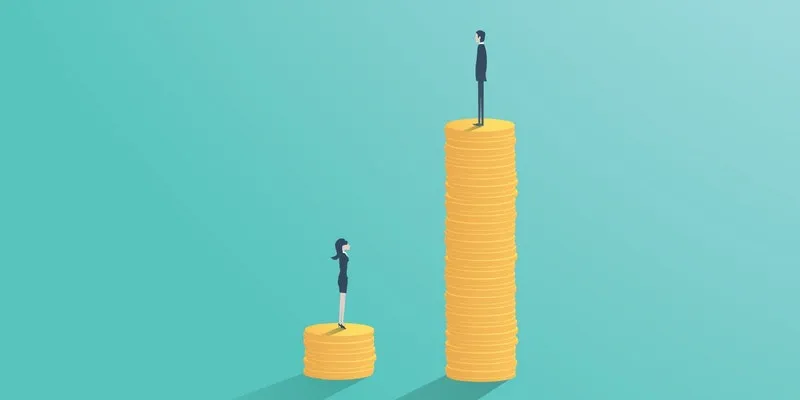

Gender Pay Gap: Is World Really Balancing For Better?
The literature on gender discrimination has always been a disturbing conversation. But, things are coming into shape now. Women, as well as men, collectively taking responsibilities to drive a gender balanced world.
Speaking of the recent campaign #BalanceForBetter, which focuses on the acceleration of gender balance in social, political, and economic sectors of the world. The campaign surely won’t end on International Women’s Day. Rather, people would have to take collaborative actions, and share responsibilities in order to bridge this gap.
Now, see if something is really evolving in gender pay parity culture.
Meta-Analysis of GPG in India

Gender Pay Gap in India
Gender disparity is deeply rooted in all the pillars of society and, nothing brought a significant change. Therefore, it is no surprise to see that, we are 202 years away to bridge the gender gap, claimed World Economic Forum. The gap in India is comparatively high, which ranks 142 out of 149 countries in economic and opportunity factors, which majorly calculates gender gap.
According to Monster Salary Report, the pay gap has narrowed by just 1%. In India, gross income of women is Rs.196/ hour; 19% less than Rs.242 than that of men. Gender Pay gap has always been one of the major issues, and highest seen in IT/ITES (26%), and 24% in Manufacturing. Even women-concentrated sectors, which includes social work and healthcare also witnessed wage gap of 21%.
“The narrowing of the gender pay gap by just one percent is not just a cause for concern, but a reminder to genuinely introspect if we are doing enough,”
- Abhijeet Mukherjee, Chief Executive Officer, Monster.com, APAC & Gulf.
Fortunately, companies today are making efforts to bridge gender gap at workplaces. They have started offering benefits and flexibility, particularly designed to keep women at work. According to a recent survey, a concrete growth from 98 lakhs 2013 to 196 lakhs in 2017 has been seen in the number of working women in corporate India.
According to Korn Ferry Global Pay Index 2018, India is rapidly improving than other countries like the US and the UK, in terms of gender wage gap. But, there is a long way to go because, gender pay gap is still 19%.
Change takes time, and studies have shown that major problem lies in gender pay gap is not “leakage”, means people believe that, women at high levels quit their jobs because of events like marriage and pregnancy. But, it isn’t the case. As a matter of fact, women are likely to be left behind from the beginning.
According to 2018 Women at Workplace study, initiated by LeanIn and Mckinsey and Co. claims that, recruitment and promotion are the two stages, where women are likely to face disadvantage. Less women are hired at entry-level, and far less gets promoted to managerial levels.
Being a part of a country, which believes “Unity in Diversity”. Culturally, we have seen more of it but, bringing the same idea at work level is unjustifiable. Now, Corporate India has to play a vital role in creating a new reality, by including opportunities for advancing women and building an environment where women should be a part of inclusive culture, and should not be left behind.
Iceland Keeping Score on Gender Pay Gap

Iceland Bans Gender Pay Gap
Since ages, Iceland has been the “world’s most gender-equal country”. From the world's first democratically directly elected female president to MPs, and even most of the company directors are women. Significantly, women are flourishing in the country, also because 4 out of 5 women have jobs.
It all started on 24 October 1975, when Icelandic women refused to go for work, to cook, clean, and even looking after their children. It was the gender equality movement, labeled as “Women’s day off”.
Fríða Rós Valdimarsdóttir was surprised, when she was at Reykjavik council, she witnessed that male members having less responsibilities than women,were getting paid more handsomely. Her concerns were rational so, Valdimarsdóttir and her association started a campaign, and that resulted in Iceland to become “the first country to legally enforce equal pay”.
Now, it is said that, the struggle was worth fighting for. Because, it was proposed that, if any public or private organization giving jobs to more than 25 people, and not being certified as paying equal wages for work of equal value, will have to pay daily fines.
Last week, Iceland became the first country to make companies prove that, they are paying both the gender equally for same work. Besides this, Iceland topped “Gender Equality Index” in the World Economic Forum. On which Valdimarsdóttir says, “I am just so proud, we actually made it happen”.
We have come so far and there is more to go. It is quite motivating to see,how businesses are altering, and building diversity and inclusion at workplaces. From a microscopic view, we are rising from our ashes and seeking to design newer perspective for the coming generations.






